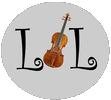I am always happy to give personalised tuition on violin, viola or for chamber music groups. This can be at your home or in Manchester where a grand piano is available for piano chamber music sessions.
During the pandemic, many of us (including me) took the opportunity to dust off the study books and address a few playing issues. Now that we are mostly back to our orchestras and quartets, the in pile is large again and the studies have gone back on the shelf! I am leaving up the lock down practice hints as they might still be useful.
I will deal with LH and RH in bite sized chunks and use IMSLP to suggest study material. The only thing you will need is violin, computer and coffee! The ideas all come from my teacher, Rudolf Botta. Many of you will remember him as a refugee from Hungary in the 1950's. He brought the techniques of modern violin playing with him from Eastern Europe which were very new to the UK at that time.
LH Basic Movements.
1. Lifting and dropping fingers.
Aim-to encourage upright finger action leading to clear articulation of notes.
Method- on each string in turn, with all fingers over the string, pull each finger as far back as possible and drop onto string using tip of finger in order 1234. Keep 1 down when dropping 2, 1&2 down when dropping 3 etc. Keep fingers bent. 10 times each finger.
2. String crossing, fingers down.
Aim-to help develop double stopping and finger agility.
Method-place all fingers down on D string. Move first from G string to E without lifting others. Replace and repeat with other fingers. 10 times each finger.
3. Finger stretching and contraction.
Aim-self explanatory!
Method-set 1st finger in place touch 2nd to it and slide up the string as far as possible, back and forth 10 times. Repeat with 3 and 4, only keeping 1st down and touching each finger back to 1st . Rpt 10 times on each string.
4. Position changing movt.
Aim-to maintain a good hand position when shifting. Fingers remain over string.
Method-place all fingers on one string and slide as far as possible up the string and back, all fingers lightly touching the string.
Repeat on all string 10 times.
Use same movt as a vibrato warm up but only shift up and back a small amount.
If you are now ready for some notes, try Sevcik Opus 1 no. 1 . Repeat each bar 4 times, separate and slurred, remember to keep fingers down where possible, especially the 1st! Increase metronome speed each day.
RH Basic Movements.
1. Arm movt, detaché stroke. (This is a smooth stroke, just detached as opposed to slurred!)
Aim-to focus on using specific parts of the bow.
Method- mark half way along the bow stick (tie a thread?). Bow consistently from middle to point feeling the 1st finger engaging the bow into the string. Now from heel to middle, feeling the little finger taking the weight of the stick. (Try to keep it bent and not locked straight).
Now whole bows, feeling the change from balancing the bow in the lower half, to leaning into the stick in the upper half.
2. Wrist movt.
Aim-to develop the small, wrist only stroke used in fast playing and sautillé.
Method-place bow on string in middle, angle the hand toward the violin, leaning into 1st finger and make small stroke just using the wrist. If this is new to you, it could be quite tricky to get. Look at forearm and make sure it does not move.
To add some notes to these strokes, try Wohlfahrt 60 studies op. 45. Numbers 1,2 or 3. Slowly for the detaché strokes and quicker for the wrist. Make sure the bow is straight and the arm level not too low, especially on lowest string!
If you would like to develop these ideas and do some technical work, I am finding that online lessons work really well. Laptop, tablet, webcam. FaceTime (Apple), Zoom or Skype. The sound is good enough for studies! Just email me through the web site and we could give it a go.

